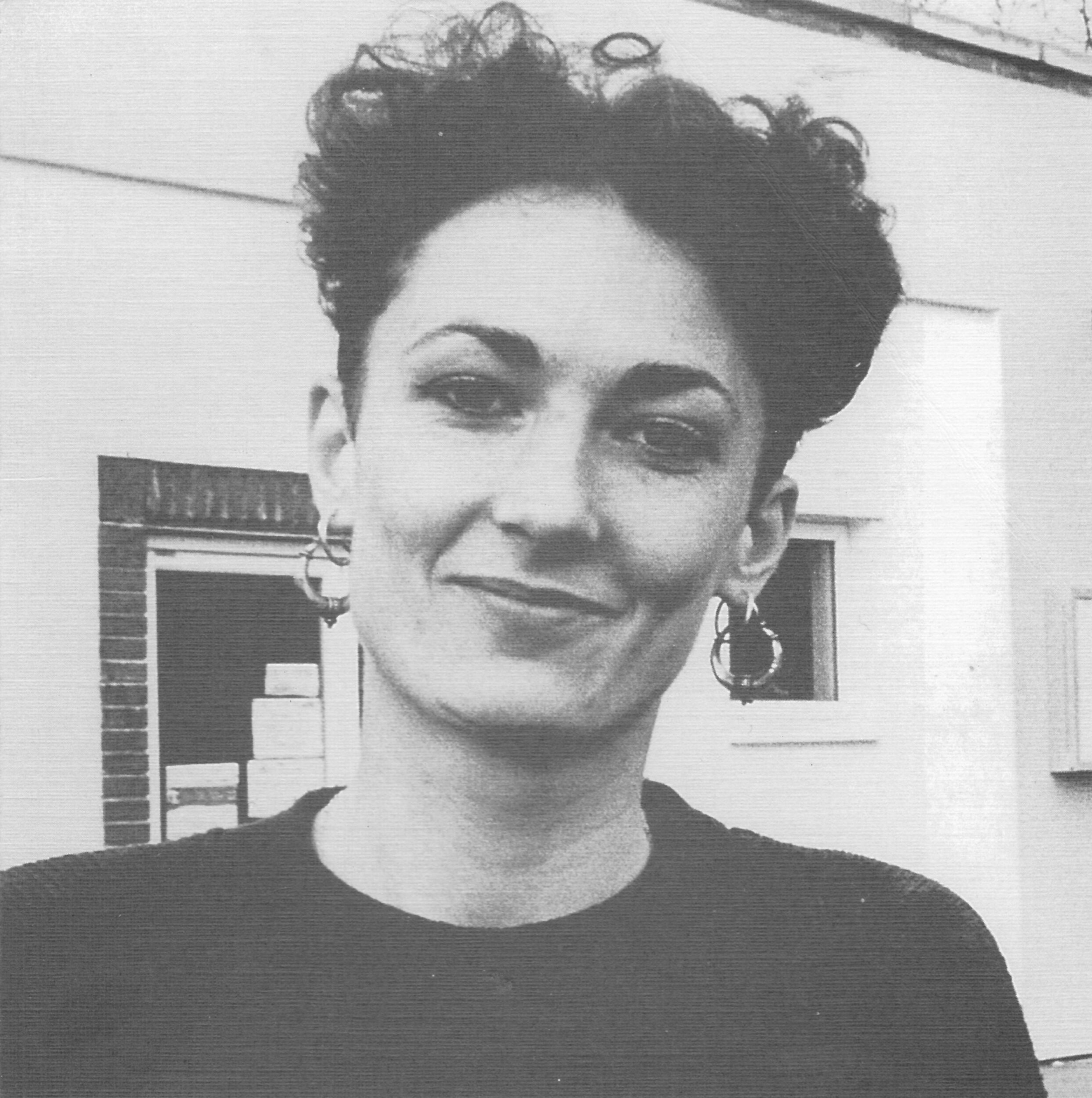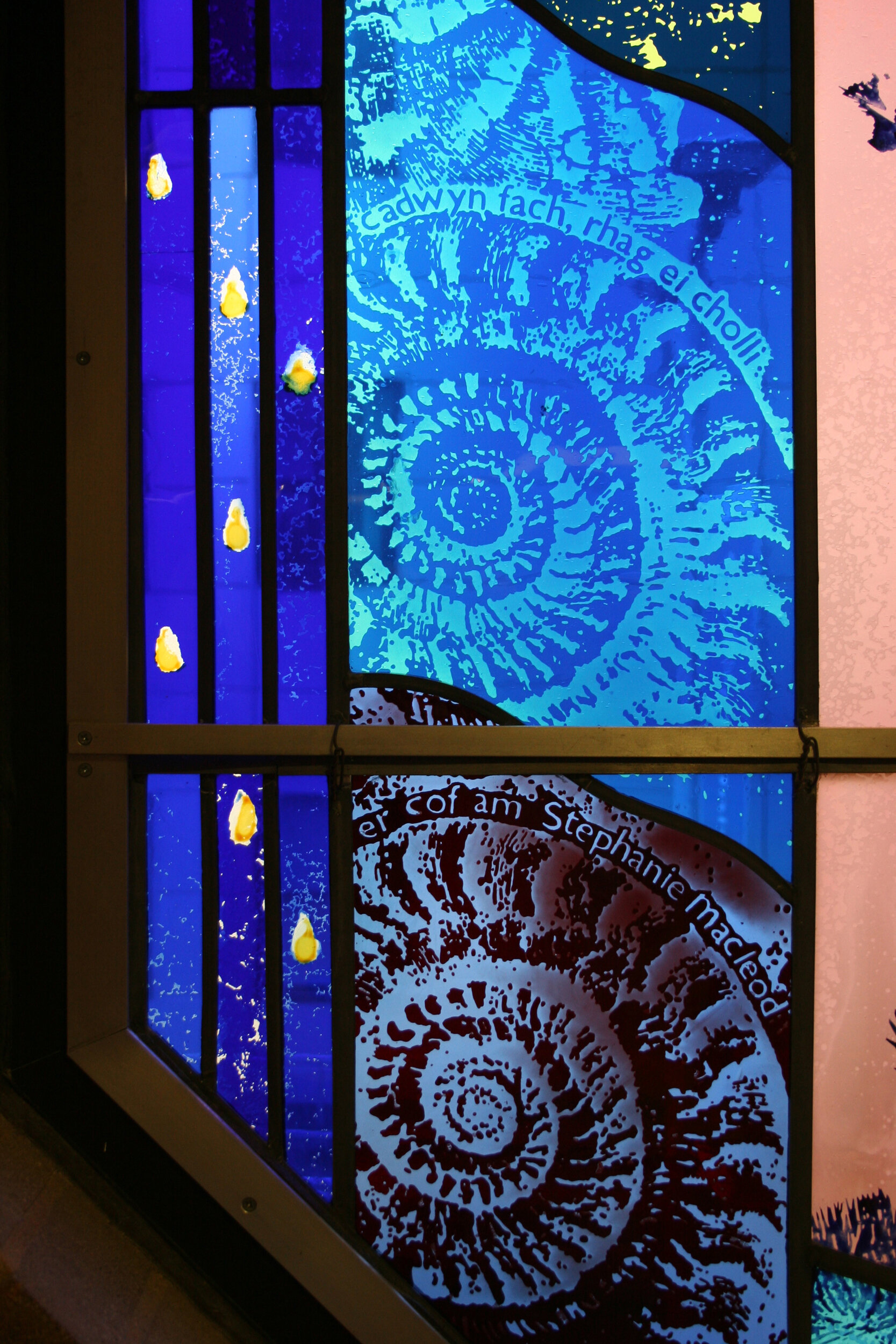Taliesin Arts Centre
Stephanie Macleod Memorial Window
Culture
Acid-etched, hand-blown “antique” glass, manufactured in Germany.
The background to the white area has been treated with glass lustres to produce a metallic effect.
Dimensions: 1200 x 1850 (2.22m2)
Fabricator: Catrin Jones Studio, Swansea
Installation Date: September 1997
-
I had known Stephanie MacLeod (1965-1996) as a friend for many years and was moved to be asked by her family to make a window in her memory after her premature death. The design collects together some of Stephanie’s favourite colours and objects, and is intended to inspire her memory.
-
In the left hand and upper borders are points of light set in bands of graded blues, representing candles. These are intended to invoke both Stephanie’s love of candles and the day of her death, the Christian feast of Candlemas, when candles are lit and carried in procession for purification.
To their right are spiral-patterned ammonites which symbolise the cyclical nature of life and death, and also recall Stephanie’s love of brooches. Traced by the ammonites’ spiral patterns is the third verse of Menna Elfyn’s poem, Brooch, written and dedicated to the memory of Stephanie:
‘roedd dy froits di, yn un llachar
angerdd ar waelod y bachyn,
cadwyn fach, rhag ei cholli.
Moving to the right, the pink, white and lower blue areas refer to Stephanie’s love of silks, and suggest folds in a silk drape. The swirling white background to Robbie Burns’ poem ‘A Red, Red Rose’ is taken from a piece of hand-painted silk, and is intended to evoke the highlands and mists of Wales and Scotland, or a hilly landscape and swirling sky.
The second stanza of Burns’ poem has been acid-etched into the glass, using a calligraphic style similar to that of the late Paul Peter Piech, of whose work Stephanie was an admirer. The Scottish thistles and floating barbed feathers have been hand-painted, using glass enamels.
-
The window is made of hand-blown “antique” glass, manufactured in Germany. The background to the white area has been treated with glass lustres to produce a metallic effect.
-
Catrin Jones, 1997
Address: Singleton Campus, Swansea University




